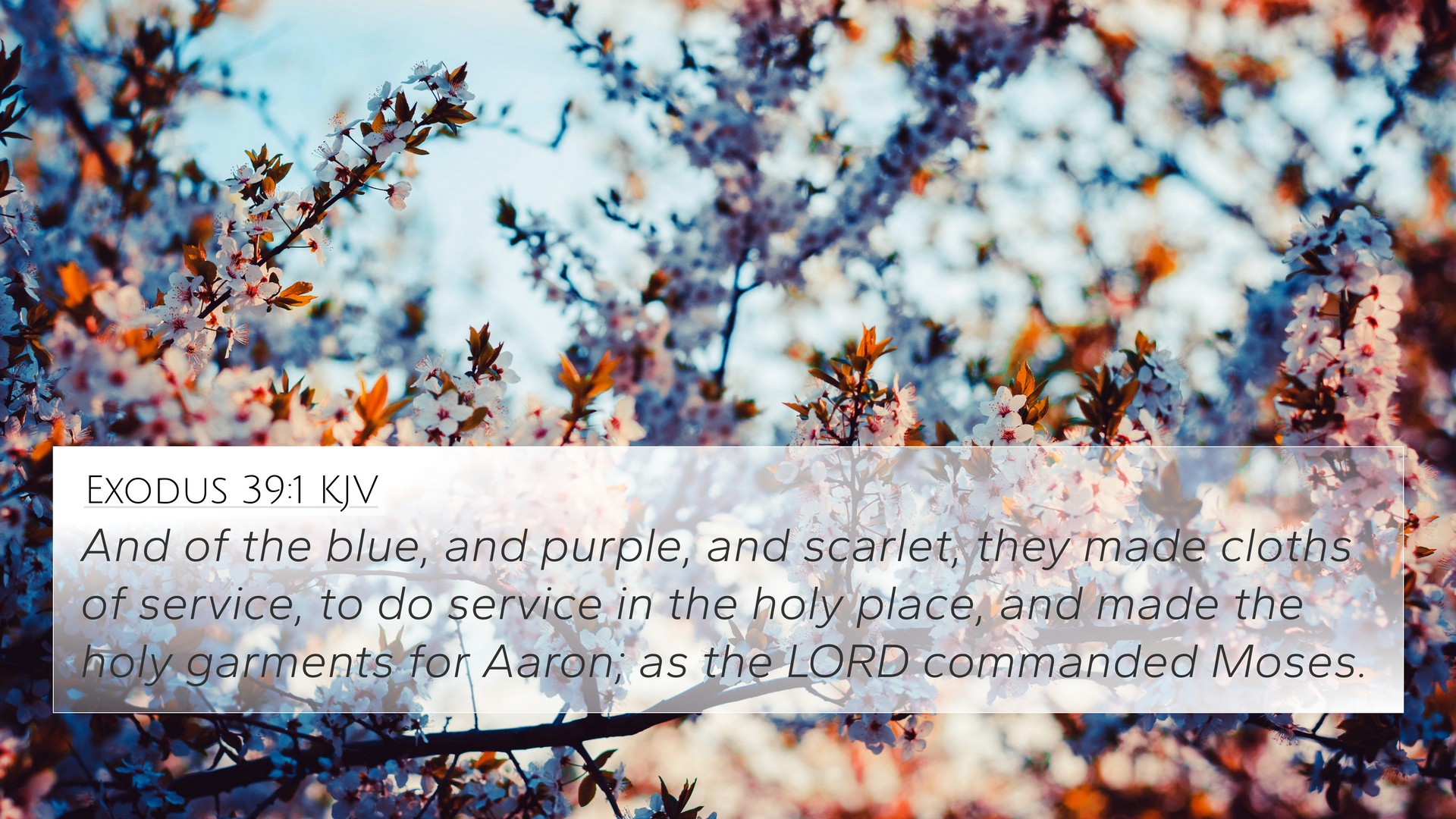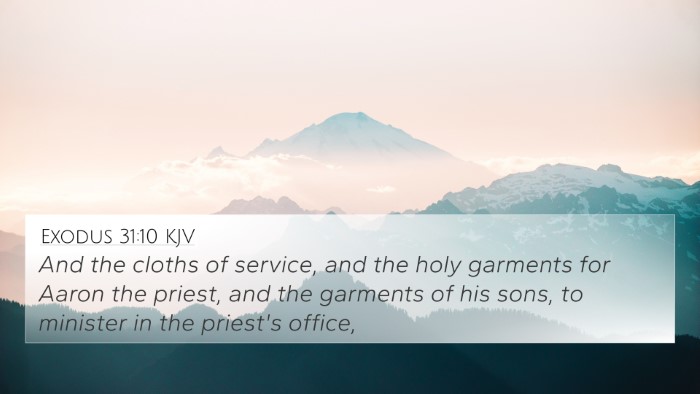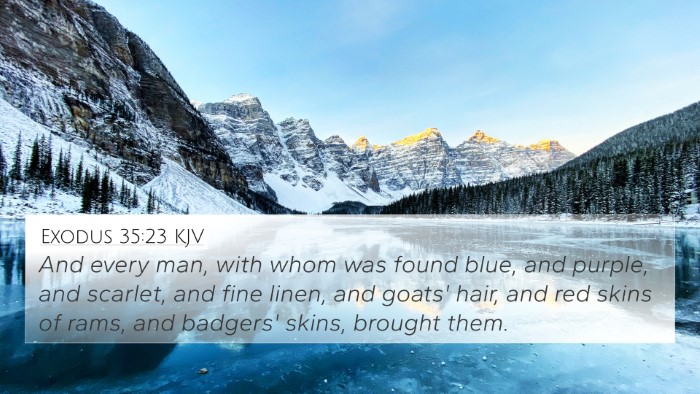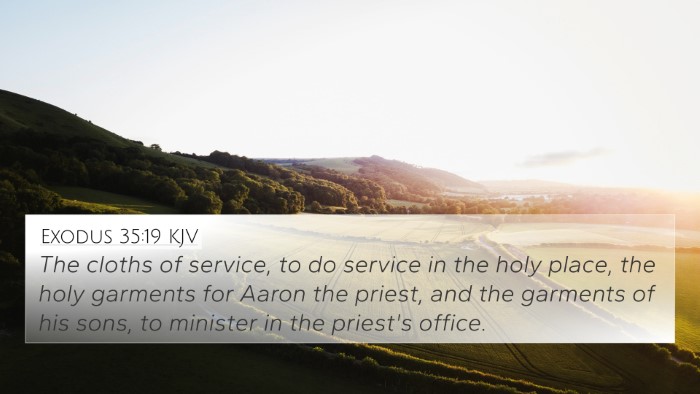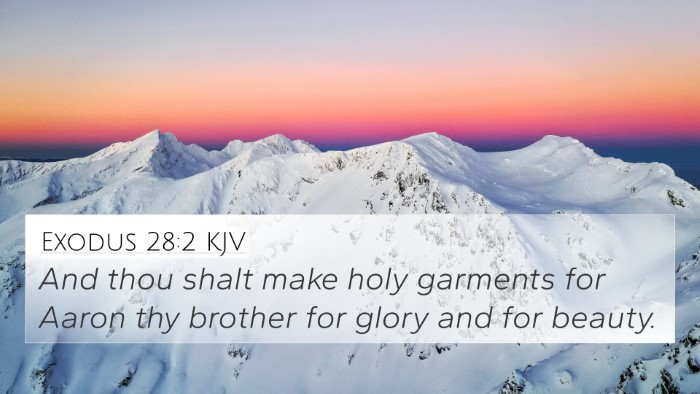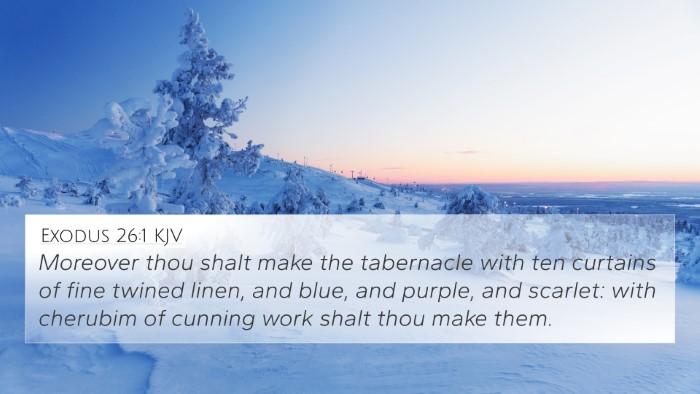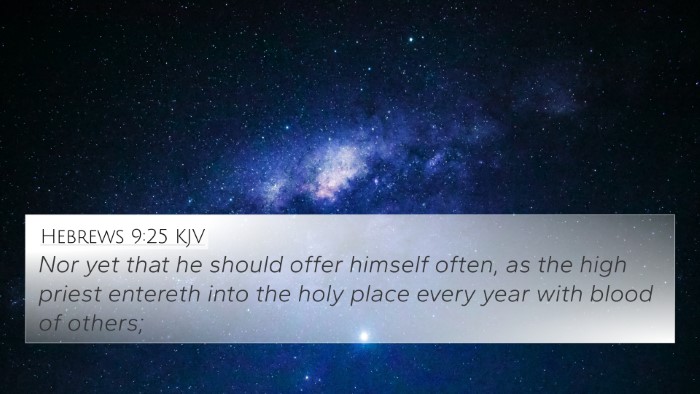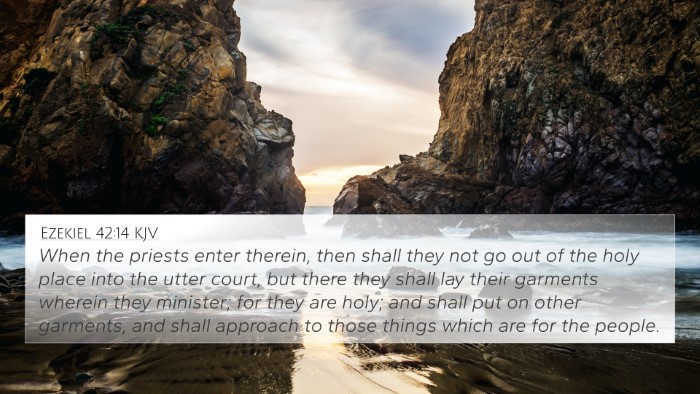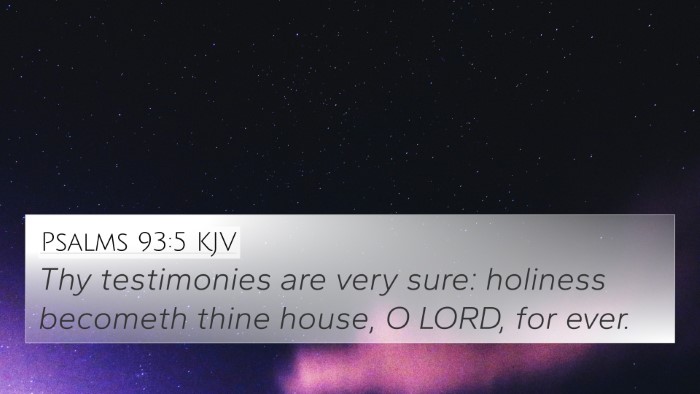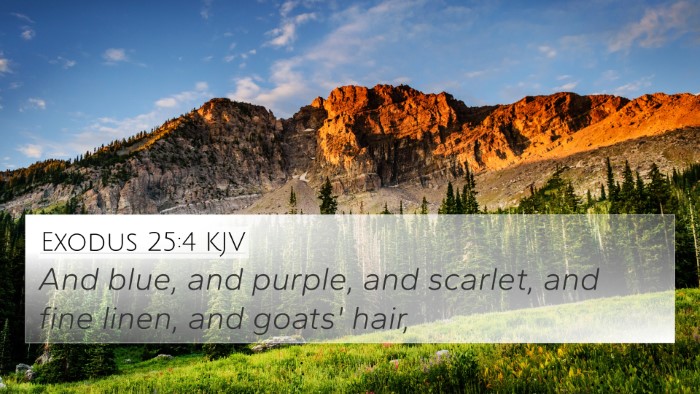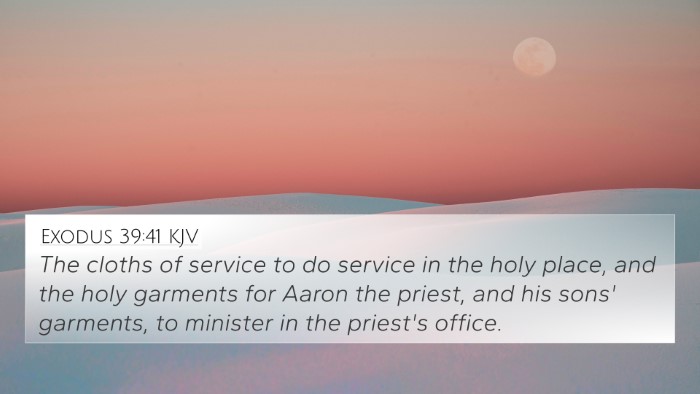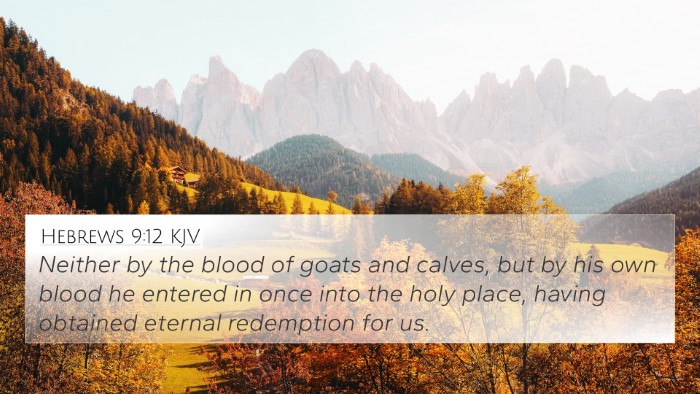Bible Verse: Exodus 39:1 - Meaning and Interpretation
Exodus 39:1 states, "And of the blue, and purple, and scarlet, they made clothes of service, to do service in the holy place, and made the holy garments for Aaron; as the Lord commanded Moses." This verse details the careful and obedient craftsmanship involved in creating the priestly garments for Aaron, the high priest. The significance of each color and material, along with the meticulous nature of their creation, reflects the broader themes of holiness, service, and divine instruction seen throughout the Bible.
Understanding the Context
This verse falls within a segment of Exodus that focuses on the preparation of the Tabernacle and its furnishings, along with the garments needed for the religious practices of the Israelites. The instructions given to Moses by God are critical, establishing not only the importance of the priesthood but also the divine standards of worship.
Commentary Insights
-
Matthew Henry:
Henry notes that the garments were a crucial part of the ceremonial worship, emphasizing that they were made "as the Lord commanded Moses." This obedience demonstrates that all aspects of worship must adhere to God’s specifications, highlighting the importance of following divine instruction in our spiritual practices.
-
Albert Barnes:
Barnes adds that the colors—blue, purple, and scarlet—symbolize various aspects of divinity. Blue often represents heaven, purple signifies royalty, and scarlet indicates sacrifice. Together, these colors foreshadow the coming of Christ and his sovereign role in redemption.
-
Adam Clarke:
Clarke emphasizes the significance of the garments being described as "clothes of service." This serves as an admonition for believers today, to view all aspects of their lives as acts of service to the Lord. The dedication involved in creating these garments is mirrored in the dedication required in Christian service.
Bible Verse Cross-References
The connections between Exodus 39:1 and other scriptures enhance our understanding of its themes. The following verses provide a rich tapestry of inter-Biblical dialogue:
- Exodus 28:2-3 - Detailed instructions regarding the making of priestly garments.
- Leviticus 8:7-9 - The consecration of Aaron and his garments for the priesthood.
- Hebrews 5:4 - Discusses the appointment of priests, linking to the significance of Aaron’s garments.
- 1 Peter 2:9 - Highlights the royal priesthood, connecting New Testament believers to the themes of Exodus.
- Revelation 19:8 - Describes the fine linen garments of the saints, paralleling the holiness of Aaron’s garments.
- Exodus 39:27 - Additional details on garments emphasizing their importance in service to God.
- Psalm 104:2 - A poetic depiction of God’s majesty that mirrors the glorious colors of the garments.
Connections Between Bible Verses
In examining the linking Bible scriptures, we find thematic ties throughout the Old and New Testaments. The relationship between the priestly garments in Exodus 39 and the priesthood of all believers in the New Testament illustrates the continuity of God’s salvific plan.
Tools for Bible Cross-Referencing
To facilitate deeper studies, believers can utilize tools such as:
- Bible Concordance: A valuable reference for finding specific verses and themes.
- Bible Cross-Reference Guide: Provides a structured way to connect related scriptures.
- Cross-Reference Bible Study: Engages users in finding themes across both testaments.
Bible Verse Analysis and Cross-Referencing Techniques
For a comprehensive understanding of Exodus 39:1, cross-referencing can be very beneficial. Techniques such as thematic analysis, comparative studies, and identifying connections with related narratives can deepen one’s grasp of the message conveyed in this verse.
Concluding Thoughts
The significance of Exodus 39:1 resonates throughout the scriptures, illustrating the importance of holiness, service, and obedience to God's design in worship. Engaging in cross-referencing enriches our knowledge and cultivates a deeper spiritual connection with the text. As believers, we are invited to approach our worship with the same intentionality and reverence that the Israelites demonstrated in their service to God.
